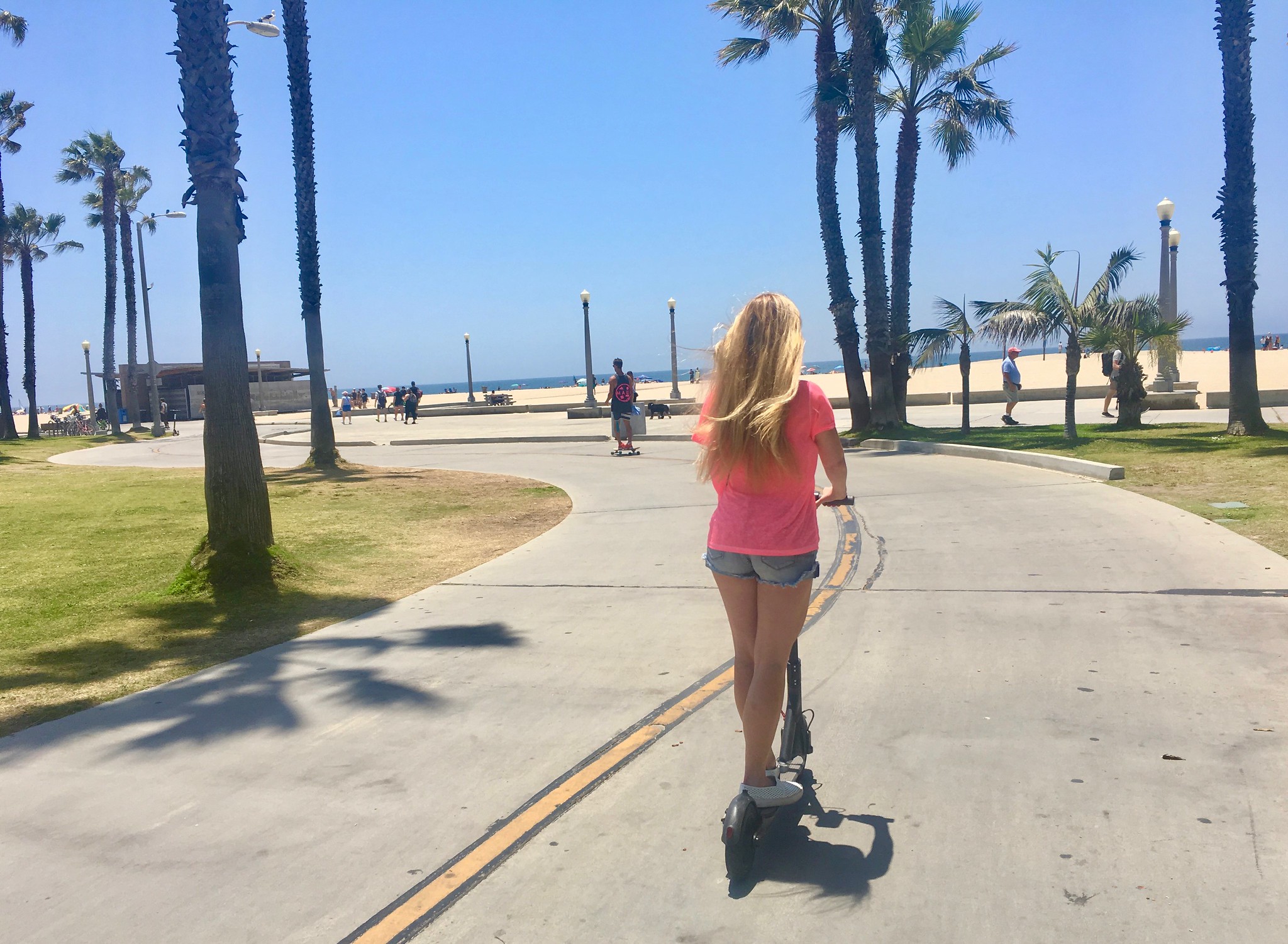Santa Monica residents are voting with their little motorized wheels.
As the coastal SoCal city grapples with how to regulate electric scooters over the next few years, a new city report shows that riders used the devices 2.7 million times over the past 12 months, or about 300,000 times per month on average. And nearly half of those trips replaced a short drive that users would have made with a car or taxi, the study showed.
City officials who surveyed about 4,200 regular scooter users between October 2018 and September 2019 found that 35 percent were Santa Monica residents, 44 percent lived in another part of Los Angeles County, and 21 were visitors. The average trip took 14 minutes over 1.3 miles and people used the devices to commute to work 29 percent of the time, followed by recreation (26 percent), dining out (14 percent), to take them home or get out of the house (11 percent), and for shopping (8 percent).
The study showed scooters have become part of the fabric of life in Southern California and increasingly becoming a primary and secondary option to get around the western part of sprawling Los Angeles, city officials said.
"I was pleased at the high number of locals using it and happy to see that the distribution of use is heavy from people who have actual Santa Monica ZIP codes," Santa Monica acting chief mobility officer Francie Stefan told Streetsblog. "It's a reasonable alternative to short trips with a car and the more we can replace short trips with scooters puts a dent in in our emissions profile."
Santa Monica isn't known as the birthplace of electric scooters for nothing. The city has run its own bike share system since 2015 and is the corporate home of micromobility pioneer Bird, which launched there and began flooding streets with its e-scooters in September, 2017.
Last fall, Santa Monica granted a much-ballyhooed pilot allowing four of the nation's largest micro-transportation companies, Bird, Jump, Lime, and Lyft, to manage an initial fleet of 2,500 devices — 2,000 electric scooters and 500 dockless bikes — which rose and eventually peaked at 3,250 devices this September.
The city has sought to accommodate the budding transit mode by installing 107 in-street e-scooter corrals on sidewalks and parking lanes and striping new lanes of traffic for bikes and scooters to use. Other cities with pilot programs like Atlanta, Nashville, and Chicago restricted when people could use scooters and how far they could ride them.
"We're proactive about finding solutions for the devices," Stefan said. "Other communities chose to ban them while we chose to take an engaged path to work with companies."
But the new transportation technology appears to be maturing, or at least moving through adolescence. Santa Monica council members voted to extend the current pilot program through May and asked city develop a new program to keep e-bikes and e-scooters off the sidewalk. Officials in Chicago and suburban Boston are also analyzing user data to inform how they will integrate scooters into the region's transportation system.
Santa Monica's second phase could include smaller scooter fleets next year but not necessarily, Stefan said. More likely, the city will build out corrals allowing scooters to cluster in places with the highest concentration of usage, such as parts of downtown, beaches near the Santa Monica Pier, and transit stops such as the Expo Line Downton Santa Monica Station where the region's light rail line terminates.
Residents still have serious concerns about safety and storage. An 88-year-old woman who tripped over a scooter parked in front of a school in Santa Monica is suing Lyft and the city.
But the potential to get people out of their cars and use the electric devices could have a significant effect on reducing traffic and taming air pollution in a city where transportation accounts for 64 percent of carbon emissions, officials said.
“This is a mode of transportation that is taking millions of car trips off the streets of Santa Monica,” Mayor Gleam Davis told the Santa Monica Daily Press. “Not only is that a climate change issue, but in my 10 years on the council, there are very few neighborhood meetings I’ve gone to where people haven’t screamed at me about traffic. So we’re not just cleaning up the environment, but we’re directly addressing an area that a lot of people in this town care about.”





